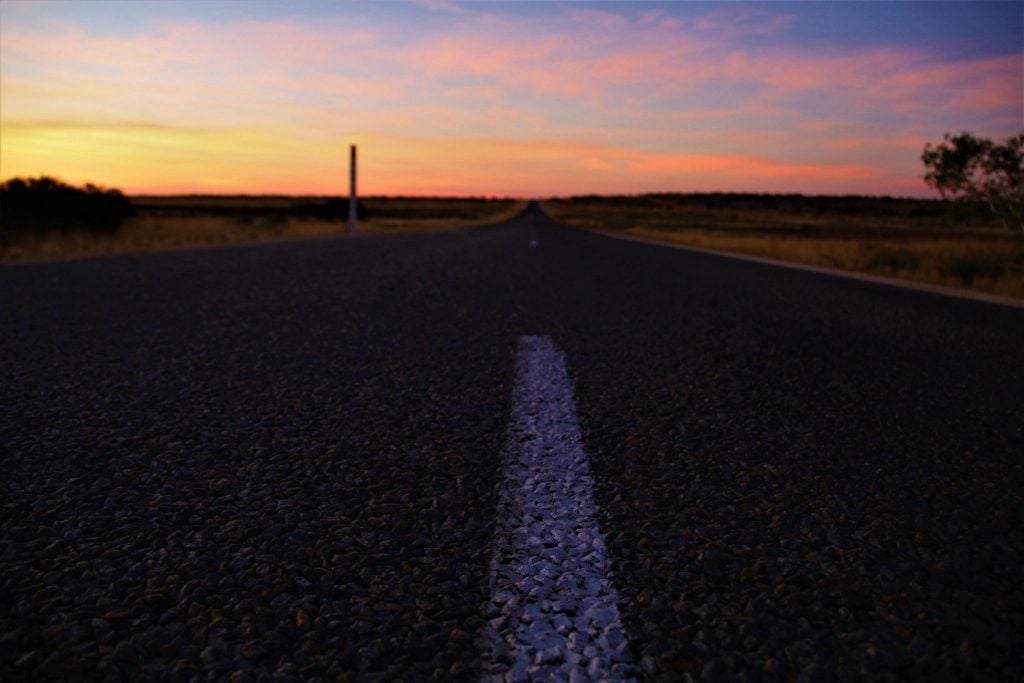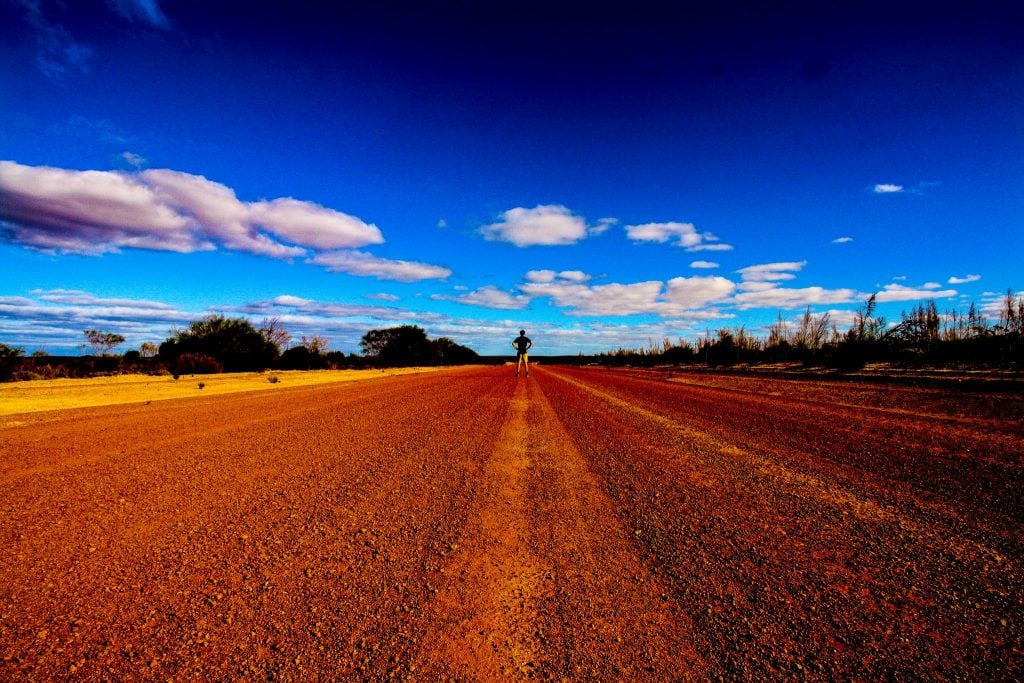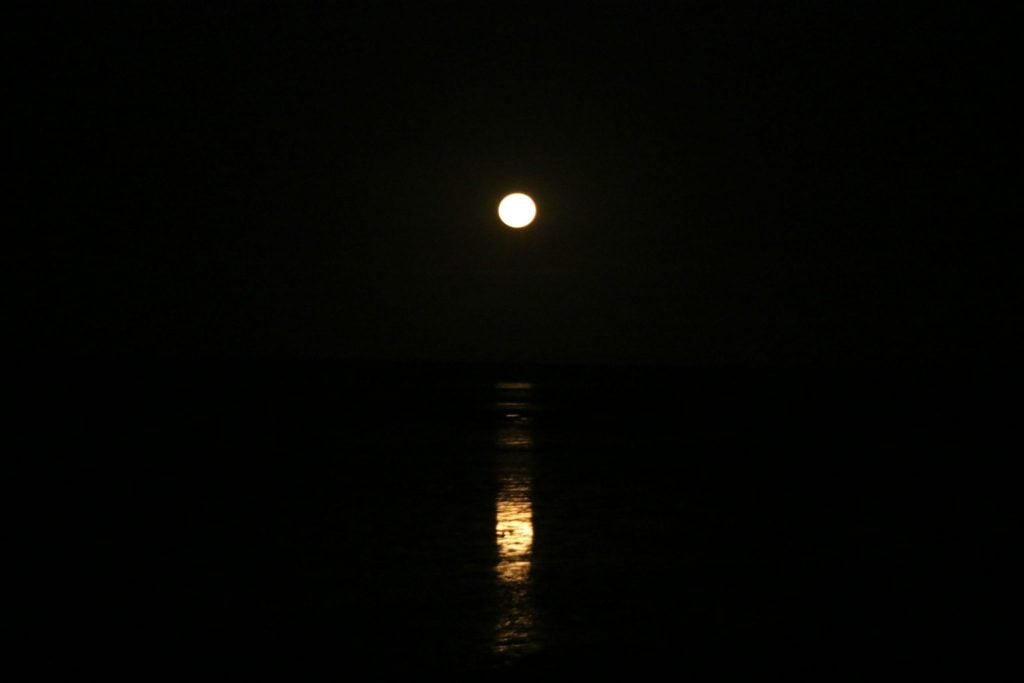Karratha isn’t exactly a city that’s found on top of most traveller’s bucket lists in Western Australia, and for those that do make it here, it’s usually just a quick refuelling stop as they make their way along the coastal highway.
Karratha though should be more than just a supply stop, as not only is it the largest city in the Pilbara region of Western Australia, but there are also some fascinating things to do in Karratha too.
Here’s my guide to Karratha, and here are the reasons why you shouldn’t skip out on this remote, but intriguing city in the Top End of WA.
Table of Contents
Where even is Karratha?
You might well be asking, ‘Where even is Karratha?’ That’s a valid question, because like I said, it’s hardly a destination that appears at the top of a ‘Best things to do in Australia’ listicle when you do a Google search.
Karratha is a remote city that grew solely to cater to the mining industry. It’s located on the coast, far in the north of Western Australia, and most travellers only encounter the city when they are making the drive from Perth to Broome, or onwards to Darwin.
Karratha is just off the North West Coastal Highway, halfway between Exmouth and Broome – which is why it’s such a convenient stopover point because really, there’s not much else around in the Pilbara!

A Brief History of Karratha
Karratha is a new city, and its history is intertwined with the fortunes of the mining companies in the Pilbara. The city was established in 1968 to cater to Dampier Port, which was set up to transport iron ore overseas. Little has changed in this respect, as much of the city is employed in the mining industry today.
Before the arrival of the miners, there was a cattle station here, and before the cattle station, local indigenous groups had roamed through the land here for thousands of years. The name of the city is even taken from an indigenous term, meaning ‘Good Country’.
The coastline here was first visited by William Dampier, the English explorer who in 1699 voyaged along much of the Western Australian coastline, long before the east coast was ever settled by the British. His name was given to the port and to the Dampier Archipelago.
The surrounding area has a richer history than Karratha itself, as nearby Roebourne was the scene of a manic Gold Rush in the middle of the 19th century, after it was established as a town in 1866, while along the coast you can find the abandoned ruins of towns and settlements that never survived for long in this remote part of Western Australia.

When to Travel to Karratha
Being located so far north, Karratha experiences extreme seasonal differences when it comes to the weather. The Pilbara only really has two seasons, a wet and a dry, and these are loosely split between summer and winter respectively.
The wet season runs from November through to April, and this is not the time to visit. There is huge rainfall, and the coast can be wracked by vicious cyclones. Roads become impassable and dangerous and travel can become all but impossible. Temperatures can soar too, as this is summer, but it’s a nasty humid heat that’s difficult to deal with.
The dry season run from May through to October and this is the best time to visit Karratha and the Pilbara. The weather is still hot, but it’s nowhere near as humid as the wet season, and temperatures are nowhere near as high either. There’s almost no rainfall, roads are dry, and it’s a fantastic time to hike and to explore the outdoors. The dry season is the time to visit Karratha WA!
Things to do in Karratha
Karratha WA and the wider area are about more than just the mining, but of course, this is an important part of local history, and you can see the industry first hand in the city. There are many more things to do in Karratha too though, from walking ancient Aboriginal heritage trails to exploring national parks.
Karratha City Centre
Karratha’s city centre is small and compact, but there’s everything you could need. There are bars, pubs and even a night club, as well as some excellent cafes and restaurants. If you’ve been road tripping along the north west coastal highway, then compared to the small towns and remote rodhouses you’ll have been stopping off at on the way, Karratha will seem like a booming metropolis, with all the home comforts you can imagine!
You can stock up on supplies at the shopping mall, where you’ll find both a Woolworths and a Coles, and plenty of liquor shops too!
Dampier
Dampier is a small town on the coast, just a short drive from Karratha itself, and it’s where the Pilbara’s mining operations send their iron ore to be loaded onto ships. The port is named for the explorer, William Dampier, although I doubt he would have imagined that this isolated harbour would one day be the terminus for some of the longest trains in the world.
You can see the trains, which stretch for kilometres, lining the railroad into port, and you can watch the iron ore being loaded onto the ships. There’s a great campsite in Dampier, which looks out over the beach, and it’s one of the cheapest places to stay in Karratha, while the Dampier Mermaid is one of the most iconic pubs in the city.
Red Dog Statue
On the causeway leading to Dampier, you can find a small, seemingly unusually placed statue of a dog on the side of the road. This a memorial to Red Dog, a local dog whose exploits are famous across Australia, so famous in fact that his adventures have even been turned into films.
Red Dog lived in the Pilbara in the 1970s, and he would hitch rides across the country with truck drivers and on buses as he toured through the region. He became a beloved local character, as time after time, he would return to Dampier after his exploits.
Burrup Peninsula
Dampier is located on the Burrup Peninsula, which hides an incredibly important piece of Aboriginal history, which few people around the world know about. Across the peninsula, you can find some of the most important rock art in Australia, and it’s thought that this is one of the highest concentrations of petroglyphs that can be found anywhere in the world.
This is an ancient place, a place that has long been associated with local culture and traditions, but due to the mining industry it’s struggled to gain recognition, and large parts have been destroyed to make way for new building projects. In fact, it’s the only location in Australia that’s on the World Monuments Fund’s list of endangered places. Hopefully, things are changing, but get in to see this remarkable part of Western Australia while it’s still there.

The Staircase to the Moon
The Pilbara is famed for the unique natural phenomenon that can be seen in certain locations across the region between March and November when the moon is full. The moonlight reflects off extensive mudflats, and creates a wonderful sight, as the reflections appear to lead to the moon itself.
While Broome is one of the best-known locations in Western Australia to see the event, Karratha also has an equally impressive display. The best place to see it in Karratha is Hearson’s Cove, close to Dampier, where you’ll find plenty of mudflats!

Yaburara Heritage Trail
To learn more about the local indigenous history and culture, then one of the best things to do in Karratha is to walk the Yaburara Heritage Trail. Starting on the edge of the city, this heritage trail consists of a network of walking trails that lead into the surrounding hills and that trace a traditional Aboriginal walking route in the area.
The entire trail is just 3.5 kilometres long, but in the blistering heat of Karratha, that’s more than long enough. This is sacred ground, so be respectful when you hike.

Roebourne
Half an hour along the highway from Karratha, you can find one of the most historic towns in Western Australia. Roebourne dates back to the 1860s when a gold rush saw thousands attempting to find their fortune in the Pilbara.
In Roebourne, you can visit the Old Gaol, at the Roebourne Tourist Centre, and many other historic buildings which date back over one hundred years to the 1880s.
Unfortunately, Roebourne’s fortunes didn’t last, and after the brief gold rush ended, the town went into decline. Today, Roebourne has become somewhat notorious across Western Australia, for being ‘one of the most socially dysfunctional towns in Australia’. The town has a high level of crime and alcoholism, and tensions are always high between locals and police. Much of this is due to the ill treatment of Aboriginals in the region in the last two centuries, but don’t let this put you off visiting, as Roebourne is still a unique place to see.
Cossack
Another historic place to visit when you are in Karratha WA is the abandoned settlement of Cossack. Located on the coast, just a short drive from Roebourne, Cossack is a ghost town that was founded in the 1870s but abandoned just a few decades later in the early 20th century.
It’s a reminder of the hardships faced by early European settlers in the Pilbara, and today you can visit the museum that’s found in the restored courthouse to learn more.
Point Samson
Just along the coast from Cossack is another small town, but this one has yet to be abandoned. Point Samson is a small harbour, which once was used to load Blue Asbestos onto ships after it was transported here from the infamous town of Wittenoom.
Today though, Point Samson is rather more laid back and less dangerous to visitors, as it’s become a quaint and charming holiday town that makes for a great place to do little at all, except camp out and enjoy the coastline.
Millstream-Chichester National Park
120 kilometres to the south of Karratha, is the beautiful Millstream-Chichester National Park. This is a verdant oasis in the otherwise red dust of the Pilbara, as the national park is known for its natural swimming pools and green scenery.
You can visit the old homestead, which has been turned into a visitors centre and museum, to learn about the Aboriginal history of the area, and the pastoral lease that was then taken out by European settlers before it was protected as a national park in the 1970s.
Karijini National Park
Another fantastic national park to visit in the Pilbara is Karijini National Park, but you’ll need a few days to get here from Karratha. It’s ‘just down the road’, as there’s little between the city and the national park, but it’s still a few hundred kilometres of driving.
Karijini National Park is the second largest national park in Western Australia, and it’s a spectacular place of rugged mountains, deep gorges and cold swimming pools. It’s an adventure playground for adults, and you can hike, swim and camp out in incredible surroundings.

Map of Things to do in Karratha
Accommodation and Camping in Karratha WA
Karratha is a big service city, and there are lots of hotels here, but you will find that they are rather expensive given the lacklustre service and lack of competition, because most exist for the mining industry. That industry has put the prices up considerably across the city, so if you need a hotel or motel, expect to pay big bucks.
If you are road tripping through Western Australia though, then Karratha has some excellent camping options and caravan parks. I’d recommend downloading the Wiki Camps App for up to date details on camping options, but from my experience, the caravan parks in the city are high quality – they even have swimming pools! – and excellent value compared to the hotels. The best place to stay is the Dampier Transit Caravan Park, where for just a few dollars you can pitch up a tent and use the facilities. Unfortunately, though, they have a limit on the number of nights you can stay!
Richard Collett



Recent Comments